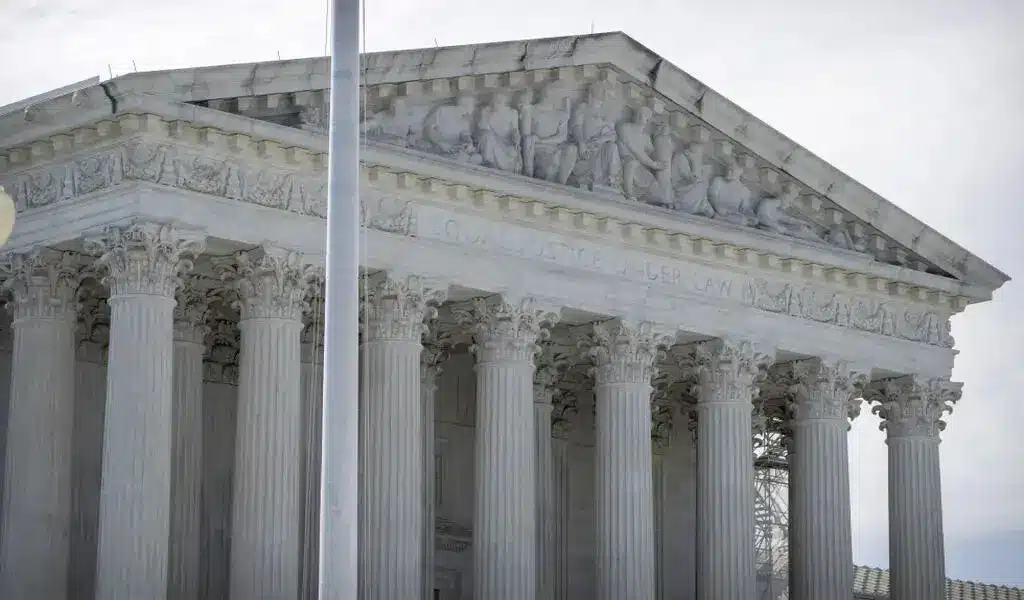News
Rising Threat: Candida Auris Spreads In 2023 With Climate Change Suspected As Culprit
(CTN NEWS) – In 2016, hospitals in New York made a startling discovery – a rare and serious fungal illness, Candida auris, which had never been reported in the United States before.
Further investigations by research laboratories revealed that the fungus had been present in the country since at least 2013, prompting concerns about its prevalence.
Since its initial detection, New York City has become the epicenter of Candida auris infections.
While the virus has spread to other locations, New York state consistently recorded the highest number of confirmed cases in the nation every year until 2021, as per data from the Centres for Disease Control and Prevention (CDC), analyzed by The Associated Press.
Candida auris poses an increasingly serious public health risk, as it can lead to severe illnesses like bloodstream, wound, and respiratory infections.
Its estimated death rate of 30% to 60% makes it a significant concern, especially for patients with major medical conditions in healthcare facilities.
Last year, patients in 29 states had the fungus clinically recognized, with Nevada and California reporting the highest number of instances. However, New York remains a key hotspot for the infection.
Traditionally, most fungal pathogens struggled to survive in mammal bodies, including humans, due to body temperatures. This provided some protection against infections.
However, as temperatures rise, fungi may adapt to warmer settings, potentially reducing human resistance. Studies suggest that Candida auris is already undergoing such adaptation.
Interestingly, Candida auris appeared on three continents simultaneously 14 years ago, in Venezuela, India, and South Africa, surprising experts due to the diverse climates in these regions.
Arturo Casadevall, a microbiologist, immunologist, and professor at Johns Hopkins University specializing in fungus diseases, pointed out the significance of this occurrence.
As Candida auris continues to pose challenges to public health, researchers and healthcare authorities are closely monitoring its spread and working towards effective prevention and treatment strategies.

The Warming Planet: Candida Auris’ Challenge to Mammals’ Warmth Defense
With warmth providing mammals an excellent defense against environmental fungi, there is concern that certain fungi will breach the temperature barrier if the planet continues to warm.
According to Casadevall, some fungi now possess higher temperature tolerances, a departure from history when warm body temperatures safeguarded mammals.
Initially linked to patients who had traveled to the United States from other countries, instances of Candida auris are now predominantly acquired locally, spreading among patients in medical settings, as stated by Meghan Marie Lyman, a CDC medical epidemiologist for the mycotic diseases branch.
The United States witnessed a dramatic surge in confirmed clinical cases, with 2,377 detected last year, marking an increase of over 1,200% from 2017. Notably, Candida auris is spreading globally, with case counts in Europe nearly doubling between 2020 and 2021, according to a survey.
Despite improved screens and surveillance, the geographic spread of the infection has expanded along with the rising number of cases, as observed by Lyman.
The CDC highlighted the pathogen’s resistance to conventional antifungal treatments and its alarming rate of spread in a news release in March, emphasizing the urgency of transmission mitigation techniques in healthcare settings.
Dr. Luis Ostrosky, an infectious diseases professor at McGovern Medical School at UTHealth Houston, described Candida auris as a “nightmare scenario.”
It possesses the potential for multi-drug resistance and rapid dissemination in medical facilities, distinguishing it as a unique challenge in the realm of fungal infections.

Challenging Candida Auris: A Resistant and Elusive Fungal Threat
Candida auris, a formidable fungal infection, often exhibits resistance to the most widely used class of antifungal drugs, and occasionally even to another drug prescribed for serious catheter fungal infections in hospitals.
Dr. Ostrosky, who has treated about ten patients with this fungus and advised many others, shared his disheartening experiences of having to inform families that no effective treatment is available for their loved ones suffering from the infection.
He witnessed its rapid spread throughout an entire Intensive Care Unit in just two weeks.
Researchers, academics, and public health organizations are actively exploring theories to explain the emergence of Candida auris. Among the most widely recognized theories is climate change, according to Dr. Ostrosky.
It is believed that the fungus might have always existed among the bacteria inhabiting the human body, but its potential health risks were overlooked until it began causing infections.
While reports of the fungus in natural environments like soil and wetlands exist, environmental sampling has been limited, and its origins and potential human involvement remain uncertain.
The complex interplay of human interaction with nature, environmental changes, and the use of fungi in agriculture might have allowed Candida auris to adapt and spread into new environments, leaving many unanswered questions.
Regardless of its origins, the fungus poses a significant threat to human health.
Immunocompromised individuals in hospitals are particularly vulnerable, but long-term care facilities and nursing homes also face risks due to limited access to diagnostics and infection control specialists.
Diagnosing Candida auris is challenging, as it mimics common signs of infection like sepsis, fever, and low blood pressure, which can have various causes. The rarity of the infection means that many doctors might not even be aware of its existence.
Treatment is equally problematic, with limited options available. The difficulty in diagnosis and treatment underscores the urgency of understanding and combating this elusive and dangerous fungal pathogen.
Blood tests are used to identify the fungus, but even detecting its presence can be a complex process, involving specialized nutrient-rich mediums to encourage growth and facilitate detection of infectious organisms.

Detection Challenges and Humorous “Gold Standard” for Candida Auris Cases
Ostrosky points out, however, that relying solely on current detection methods misses approximately 50% of the Candida auris cases. While more recent equipment is available to enhance bloodstream detection, its high cost and limited usage in hospitals remain barriers.
He humorously remarks that their current “gold standard” for detection is only slightly better than flipping a coin.
In addition to the rise in incidence, popular culture has played a role in increasing public awareness of fungal infections.
The HBO drama “The Last of Us” revolves around surviving a fungus outbreak, blurring the line between science fiction and the real challenge of combating climate change, which is reshaping the landscape of diseases posing major threats to human health.
Johns Hopkins researcher Casadevall explains that global warming exerts selection pressure on microbes through the increasing frequency of extremely hot days.
Each day with temperatures above 100 degrees Fahrenheit (37.7 degrees Celsius) becomes a selection event for microbes, and the more such days occur, the higher the probability that some will adapt and survive.
Ostrosky reflects on how mycology has been relatively overlooked for decades, as fungal infections were not as commonly seen before.
However, with the emergence of challenging pathogens like Candida auris, the spotlight is now on fungal diseases and the urgent need to understand, detect, and treat them effectively.
RELATED CTN NEWS:
Thailand Parliament’s Joint Meeting: Postpones Parliamentary PM Vote Scheduled For Aug 4th

News
Google’s Search Dominance Is Unwinding, But Still Accounting 48% Search Revenue

Google is so closely associated with its key product that its name is a verb that signifies “search.” However, Google’s dominance in that sector is dwindling.
According to eMarketer, Google will lose control of the US search industry for the first time in decades next year.
Google will remain the dominant search player, accounting for 48% of American search advertising revenue. And, remarkably, Google is still increasing its sales in the field, despite being the dominating player in search since the early days of the George W. Bush administration. However, Amazon is growing at a quicker rate.
Google’s Search Dominance Is Unwinding
Amazon will hold over a quarter of US search ad dollars next year, rising to 27% by 2026, while Google will fall even more, according to eMarketer.
The Wall Street Journal was first to report on the forecast.
Lest you think you’ll have to switch to Bing or Yahoo, this isn’t the end of Google or anything really near.
Google is the fourth-most valued public firm in the world. Its market worth is $2.1 trillion, trailing just Apple, Microsoft, and the AI chip darling Nvidia. It also maintains its dominance in other industries, such as display advertisements, where it dominates alongside Facebook’s parent firm Meta, and video ads on YouTube.
To put those “other” firms in context, each is worth more than Delta Air Lines’ total market value. So, yeah, Google is not going anywhere.
Nonetheless, Google faces numerous dangers to its operations, particularly from antitrust regulators.
On Monday, a federal judge in San Francisco ruled that Google must open up its Google Play Store to competitors, dealing a significant blow to the firm in its long-running battle with Fortnite creator Epic Games. Google announced that it would appeal the verdict.
In August, a federal judge ruled that Google has an illegal monopoly on search. That verdict could lead to the dissolution of the company’s search operation. Another antitrust lawsuit filed last month accuses Google of abusing its dominance in the online advertising business.
Meanwhile, European regulators have compelled Google to follow tough new standards, which have resulted in multiple $1 billion-plus fines.

Pixa Bay
Google’s Search Dominance Is Unwinding
On top of that, the marketplace is becoming more difficult on its own.
TikTok, the fastest-growing social network, is expanding into the search market. And Amazon has accomplished something few other digital titans have done to date: it has established a habit.
When you want to buy anything, you usually go to Amazon, not Google. Amazon then buys adverts to push companies’ products to the top of your search results, increasing sales and earning Amazon a greater portion of the revenue. According to eMarketer, it is expected to generate $27.8 billion in search revenue in the United States next year, trailing only Google’s $62.9 billion total.
And then there’s AI, the technology that (supposedly) will change everything.
Why search in stilted language for “kendall jenner why bad bunny breakup” or “police moving violation driver rights no stop sign” when you can just ask OpenAI’s ChatGPT, “What’s going on with Kendall Jenner and Bad Bunny?” in “I need help fighting a moving violation involving a stop sign that wasn’t visible.” Google is working on exactly this technology with its Gemini product, but its success is far from guaranteed, especially with Apple collaborating with OpenAI and other businesses rapidly joining the market.
A Google spokeswoman referred to a blog post from last week in which the company unveiled ads in its AI overviews (the AI-generated text that appears at the top of search results). It’s Google’s way of expressing its ability to profit on a changing marketplace while retaining its business, even as its consumers steadily transition to ask-and-answer AI and away from search.

Google has long used a single catchphrase to defend itself against opponents who claim it is a monopoly abusing its power: competition is only a click away. Until recently, that seemed comically obtuse. Really? We are going to switch to Bing? Or Duck Duck Go? Give me a break.
But today, it feels more like reality.
Google is in no danger of disappearing. However, every highly dominating company faces some type of reckoning over time. GE, a Dow mainstay for more than a century, was broken up last year and is now a shell of its previous dominance. Sears declared bankruptcy in 2022 and is virtually out of business. US Steel, long the foundation of American manufacturing, is attempting to sell itself to a Japanese corporation.
SOURCE | CNN
News
2024 | Supreme Court Won’t Hear Appeal From Elon Musk’s X Platform Over Warrant In Trump Case

Washington — Trump Media, The Supreme Court announced Monday that it will not hear an appeal from social media platform X about a search warrant acquired by prosecutors in the election meddling case against former President Donald Trump.
The justices did not explain their rationale, and there were no recorded dissents.
The firm, which was known as Twitter before being purchased by billionaire Elon Musk, claims a nondisclosure order that prevented it from informing Trump about the warrant obtained by special counsel Jack Smith’s team violated its First Amendment rights.
The business also claims Trump should have had an opportunity to exercise executive privilege. If not reined in, the government may employ similar tactics to intercept additional privileged communications, their lawyers contended.
Supreme Court Won’t Hear Appeal From Elon Musk’s X Platform Over Warrant In Trump Case
Two neutral electronic privacy groups also joined in, urging the high court to hear the case on First Amendment grounds.
Prosecutors, however, claim that the corporation never shown that Trump utilized the account for official purposes, therefore executive privilege is not a problem. A lower court also determined that informing Trump could have compromised the current probe.

Trump utilized his Twitter account in the weeks preceding up to his supporters’ attack on the Capitol on January 6, 2021, to spread false assertions about the election, which prosecutors claim were intended to create doubt in the democratic process.
The indictment describes how Trump used his Twitter account to encourage his followers to travel to Washington on Jan. 6, pressuring Vice President Mike Pence to reject the certification, and falsely claiming that the Capitol crowd, which battered police officers and destroyed glass, was peaceful.
Supreme Court Won’t Hear Appeal From Elon Musk’s X Platform Over Warrant In Trump Case
That case is now moving forward following the Supreme Court’s verdict in July, which granted Trump full immunity from criminal prosecution as a former president.
The warrant arrived at Twitter amid quick changes implemented by Musk, who bought the company in 2022 and has since cut off most of its workforce, including those dedicated to combating disinformation and hate speech.
SOURCE | AP
News
The Supreme Court Turns Down Biden’s Government Appeal in a Texas Emergency Abortion Matter.

(VOR News) – A ruling that prohibits emergency abortions that contravene the Supreme Court law in the state of Texas, which has one of the most stringent abortion restrictions in the country, has been upheld by the Supreme Court of the United States. The United States Supreme Court upheld this decision.
The justices did not provide any specifics regarding the underlying reasons for their decision to uphold an order from a lower court that declared hospitals cannot be legally obligated to administer abortions if doing so would violate the law in the state of Texas.
Institutions are not required to perform abortions, as stipulated in the decree. The common populace did not investigate any opposing viewpoints. The decision was made just weeks before a presidential election that brought abortion to the forefront of the political agenda.
This decision follows the 2022 Supreme Court ruling that ended abortion nationwide.
In response to a request from the administration of Vice President Joe Biden to overturn the lower court’s decision, the justices expressed their disapproval.
The government contends that hospitals are obligated to perform abortions in compliance with federal legislation when the health or life of an expectant patient is in an exceedingly precarious condition.
This is the case in regions where the procedure is prohibited. The difficulty hospitals in Texas and other states are experiencing in determining whether or not routine care could be in violation of stringent state laws that prohibit abortion has resulted in an increase in the number of complaints concerning pregnant women who are experiencing medical distress being turned away from emergency rooms.
The administration cited the Supreme Court’s ruling in a case that bore a striking resemblance to the one that was presented to it in Idaho at the beginning of the year. The justices took a limited decision in that case to allow the continuation of emergency abortions without interruption while a lawsuit was still being heard.
In contrast, Texas has been a vocal proponent of the injunction’s continued enforcement. Texas has argued that its circumstances are distinct from those of Idaho, as the state does have an exemption for situations that pose a significant hazard to the health of an expectant patient.
According to the state, the discrepancy is the result of this exemption. The state of Idaho had a provision that safeguarded a woman’s life when the issue was first broached; however, it did not include protection for her health.
Certified medical practitioners are not obligated to wait until a woman’s life is in imminent peril before they are legally permitted to perform an abortion, as determined by the state supreme court.
The state of Texas highlighted this to the Supreme Court.
Nevertheless, medical professionals have criticized the Texas statute as being perilously ambiguous, and a medical board has declined to provide a list of all the disorders that are eligible for an exception. Furthermore, the statute has been criticized for its hazardous ambiguity.
For an extended period, termination of pregnancies has been a standard procedure in medical treatment for individuals who have been experiencing significant issues. It is implemented in this manner to prevent catastrophic outcomes, such as sepsis, organ failure, and other severe scenarios.
Nevertheless, medical professionals and hospitals in Texas and other states with strict abortion laws have noted that it is uncertain whether or not these terminations could be in violation of abortion prohibitions that include the possibility of a prison sentence. This is the case in regions where abortion prohibitions are exceedingly restrictive.
Following the Supreme Court’s decision to overturn Roe v. Wade, which resulted in restrictions on the rights of women to have abortions in several Republican-ruled states, the Texas case was revisited in 2022.
As per the orders that were disclosed by the administration of Vice President Joe Biden, hospitals are still required to provide abortions in cases that are classified as dire emergency.
As stipulated in a piece of health care legislation, the majority of hospitals are obligated to provide medical assistance to patients who are experiencing medical distress. This is in accordance with the law.
The state of Texas maintained that hospitals should not be obligated to provide abortions throughout the litigation, as doing so would violate the state’s constitutional prohibition on abortions. In its January judgment, the 5th United States Circuit Court of Appeals concurred with the state and acknowledged that the administration had exceeded its authority.
SOURCE: AP
SEE ALSO:
Could Last-Minute Surprises Derail Kamala Harris’ Campaign? “Nostradamus” Explains the US Poll.
-

 News4 years ago
News4 years agoLet’s Know About Ultra High Net Worth Individual
-
Entertainment2 years ago
Mabelle Prior: The Voice of Hope, Resilience, and Diversity Inspiring Generations
-
News11 years ago
Enviromental Groups Tell Mekong Leaders Lao Dam Evaluation Process Flawed
-

 Health4 years ago
Health4 years agoHow Much Ivermectin Should You Take?
-

 Tech3 years ago
Tech3 years agoTop Forex Brokers of 2023: Reviews and Analysis for Successful Trading
-

 Lifestyles3 years ago
Lifestyles3 years agoAries Soulmate Signs
-

 Entertainment3 years ago
Entertainment3 years agoWhat Should I Do If Disney Plus Keeps Logging Me Out of TV?
-

 Health3 years ago
Health3 years agoCan I Buy Ivermectin Without A Prescription in the USA?


